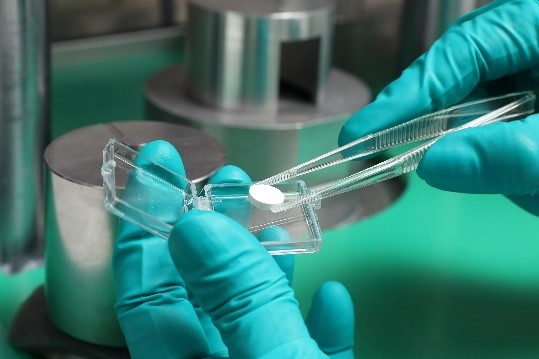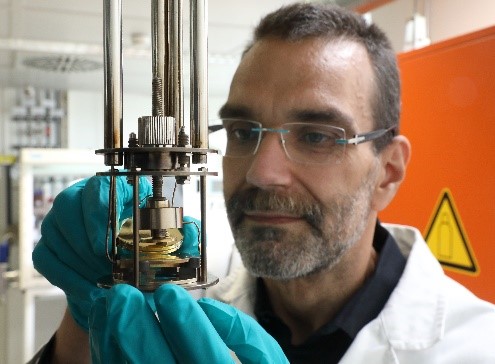July 2020
A battery cell is very much defined by the materials and the interaction of materials within the cell. The development of a set of advanced battery materials is therefore one of the core activities within the SAFELiMOVE project. The individual material properties already define the potential of the cell in terms of energy density and cycling performance. However, what is even more important is the interaction of the materials with each other in the complex environment of a battery cell.
To meet this challenging task Schott, Umicore, Hydro Quebec, CIC Energigune and ABEE cooperate to develop materials, which will be adopted to each other for effective Lithium transport. The material development will be done in three steps. After each steps the new materials will be evaluated in interphase phenomena and cell behaviour.

Characterization of a pressed pellet of the first generation of oxidic electrolyte.
Despite of all COVID-19 limitations this first milestone (Level 1 materials selected for further processing and characterization) was reached in July in time. An initial set of materials comprising new polymer and oxidic electrolytes, NMC cathode material and an ultrathin Lithium metal foil was developed by the partners. The materials were characterized and checked for compatibility. Fabrication in lab scale was established and the materials were provided to other project partners for further characterization and cell fabrication. Their feedback will be very helpful, as it will serve as a basis to guide future improvements to next-generation materials.

Characterization of a pressed pellet of the first generation of oxidic electrolyte.